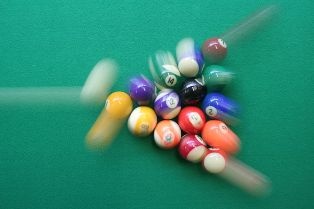| Wiki Markup |
|---|
| Composition Setup |
| HTML Table | |||||||||||||||||||||||||||||||||||||||||||||||||||||||||||||||||||||||||||||||||||||||||||||||||||||||||||||||||||||||||||||||||||||||||||||||||||||||||||||||||||||||||||||||||||||||||||||||||||||||||||||||||||||||||||||||||||||||||||||||||||||||||||||||||||||||||||||||||||||||||||||||||||||||||||||||||||||||||||||||||||||||||||||||||||||||||
|---|---|---|---|---|---|---|---|---|---|---|---|---|---|---|---|---|---|---|---|---|---|---|---|---|---|---|---|---|---|---|---|---|---|---|---|---|---|---|---|---|---|---|---|---|---|---|---|---|---|---|---|---|---|---|---|---|---|---|---|---|---|---|---|---|---|---|---|---|---|---|---|---|---|---|---|---|---|---|---|---|---|---|---|---|---|---|---|---|---|---|---|---|---|---|---|---|---|---|---|---|---|---|---|---|---|---|---|---|---|---|---|---|---|---|---|---|---|---|---|---|---|---|---|---|---|---|---|---|---|---|---|---|---|---|---|---|---|---|---|---|---|---|---|---|---|---|---|---|---|---|---|---|---|---|---|---|---|---|---|---|---|---|---|---|---|---|---|---|---|---|---|---|---|---|---|---|---|---|---|---|---|---|---|---|---|---|---|---|---|---|---|---|---|---|---|---|---|---|---|---|---|---|---|---|---|---|---|---|---|---|---|---|---|---|---|---|---|---|---|---|---|---|---|---|---|---|---|---|---|---|---|---|---|---|---|---|---|---|---|---|---|---|---|---|---|---|---|---|---|---|---|---|---|---|---|---|---|---|---|---|---|---|---|---|---|---|---|---|---|---|---|---|---|---|---|---|---|---|---|---|---|---|---|---|---|---|---|---|---|---|---|---|---|---|---|---|---|---|---|---|---|---|---|---|---|---|---|---|---|---|---|---|---|---|---|---|---|---|---|---|---|---|---|---|---|---|---|---|---|---|---|---|---|---|---|---|---|---|---|---|---|---|---|---|---|
| |||||||||||||||||||||||||||||||||||||||||||||||||||||||||||||||||||||||||||||||||||||||||||||||||||||||||||||||||||||||||||||||||||||||||||||||||||||||||||||||||||||||||||||||||||||||||||||||||||||||||||||||||||||||||||||||||||||||||||||||||||||||||||||||||||||||||||||||||||||||||||||||||||||||||||||||||||||||||||||||||||||||||||||||||||||||||
}{composition-setup}
{table:rules=cols|cellpadding=8|cellspacing=0|border=1|frame=void}
{tr:valign=top}
{td}
h4. Introduction to the Model
h5. Description and Assumptions
{excerpt:hidden=true}*[*System*|system]**:* Any. --- *[*Interactions*|interaction]**:* Any. --- *Note:* Linear [momentum|momentum] evolves separately from [angular momentum|angular momentum about a single axis], so all system constituents are treated as [point particles|point particle] in this [model|model].{excerpt}
This [model|model] is generally applicable (assuming knowledge of the external [forces|force] and [system|system] [constituents|system constituent]). The [model|model] is especially useful when describing the [momentum|momentum] of [systems|system] where [external forces|external force] are absent ([system|system] [momentum|momentum] will be constant) or estimating the [force|force] in a process that occurs in a very short time interval such as collisions ([impulse|impulse] will be easier to determine than [force|force]).
h5. Learning Objectives
Students will be assumed to understand this model who can:
* Define the momentum of a [point particle].
* Define [impulse] in terms of [momentum] or in terms of [force].
* Give an expression for the time-average [force] on a [system] in terms of its [momentum].
* Calculate the net [external force] on a [system] containing several objects.
* Describe the conditions required for the [momentum] of a [system] to be [conserved].
* Describe the [system] that must be considered and the assumptions that lead to approximate conservation of momentum in a collision.
h5. Relevant Definitions
\\
{latex}
|
| Wiki Markup |
|---|
{html}
<script type="text/javascript">
var gaJsHost = (("https:" == document.location.protocol) ? "https://ssl." : "http://www.");
document.write(unescape("%3Cscript src='" + gaJsHost + "google-analytics.com/ga.js' type='text/javascript'%3E%3C/script%3E"));
</script>
<script type="text/javascript">
try {
var pageTracker = _gat._getTracker("UA-11762009-2");
pageTracker._trackPageview();
} catch(err) {}</script>
{html} |


